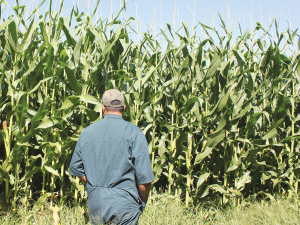Cyclone-hit wool scourer reopens
The world's largest wool scouring facility, WoolWorks Awatoto plant in Napier, is back operating at full capacity.
 Central and Northern North Island have produced excellent crops with farmers expecting yields in the high 20 tonnes/ha.
Central and Northern North Island have produced excellent crops with farmers expecting yields in the high 20 tonnes/ha.
With farmers having a bumper maize silage season this year, how it is harvested and managed will be crucial to preserving its quality and unlocking its nutritional value.
Cyclone Gabrielle and atrocious weather decimate a lot of last year's maize crops.
Fast forward 12 months and the central and northern North Island have produced excellent crops with farmers expecting yields in the high 20 tonnes per hectare, according to Pioneer farm systems manager Wade Bell who recently presented to the SealesWinslow team. Canterbury and the Central Plateau are also producing record yields.
SealesWinslow nutrition and quality manager Paul Drew says as harvesting gets underway, many factors can influence maize silage quality from the chop length to kernel integrity and how you manage your stack.
"Harvest time, longer chop lengths and cracked kernels enhance the availability of nutrients, while proper stack management, including drainage and covering prevents, spoiage and mould growth," says Paul.
"Farmers should consider their maize silage harvest timing carefully. Maize silage should be harvested when whole plant dry matter is approximately 35%. An indicator of this is where the milk line is two-thirds of the way down the kernel. To confirm this, a sample should be tested, using a suitable method or in a laboratory. Harvesting at the right time ensures a better silage yield, maximising starch content and promotes good fermentation through the ensiling process."
Farmers should aim for a chop length of arond 15-20mm for the best packing density in the stack and fermentation. Using well-maintained forage harvesters with sharp blades will also achieve a clean cut and minimise kernel damage.
Proper compaction in the silage stack is also crucial for removing oxygen and promoting good anaerobic fermentation.
"It's all about doing the basics well," says Paul. "Use heavy packing equipment and compact layers to achieve a dense stack. Stacks should also be well sealed to create an airtight seal and prevent spoilage."
Bankers have been making record profits in the last few years, but those aren’t the only records they’ve been breaking, says Federated Farmers vice president Richard McIntyre.
The 2023-24 season has been a roller coaster ride for Waikato dairy farmers, according to Federated Farmers dairy section chair, Mathew Zonderop.
Ministry for Primary Industries (MPI) director general Ray Smith says job cuts announced this morning will not impact the way the Ministry is organised or merge business units.
Scales Corporation is acquiring a number of orchard assets from Bostock Group.
Family and solidarity shone through at the 75 years of Ferdon sale in Otorohanga last month.
The Ministry for Primary Industries (MPI) has informed staff it will cut 391 jobs following a consultation period.
OPINION: Scientists claim to have found a new way to make a substitute for cow's milk that could have a…
OPINION: The Irish have come up with a novel way to measure cow belching, which is said to account for…